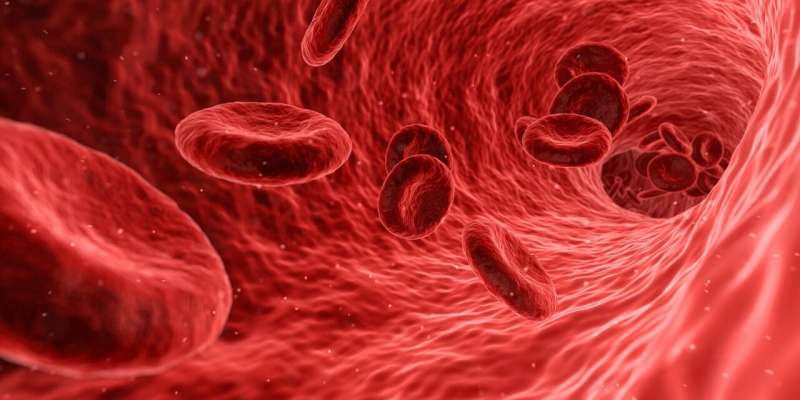Structure of fat-processing enzyme determined

After decades of work with no success, researchers have determined the high-resolution, three-dimensional structure for lipoprotein lipase, the enzyme that processes fats, or triglycerides, in the bloodstream and releases nutrients for vital tissues such as skeletal muscle and the heart. Triglycerides are the main source of fuel for most cells in the body.
Lipoprotein lipase is responsible for breaking down the triglycerides in lipoproteins, or fat-rich particles, in the bloodstream. In addition to releasing nutrients, or fatty acids, for important tissues, lipoprotein lipase plays a key role in generating the cholesterol-rich lipoproteins that promote atherosclerotic lesions within arteries. For more than three decades, researchers around the world have attempted to determine the structure of lipoprotein lipase, with the goal of understanding how the enzyme works and formulating strategies to reduce triglyceride levels in the bloodstream. Determining the structure of lipoprotein lipase requires crystallizing the enzyme. In the case of lipoprotein lipase, obtaining crystals proved to be extremely difficult, most likely because lipoprotein lipase is a highly unstable enzyme.
In the new study, researchers at UCLA and collaborators in Boston and Copenhagen created crystals for lipoprotein lipase. The breakthrough proved to be mixing lipoprotein lipase with another protein, GPIHBP1. GPIHBP1 is a capillary protein that binds lipoprotein lipase and shuttles it to its site of action inside capillaries. When the structure of lipoprotein lipase was stabilized, GPIHBP1 made it possible to obtain useful crystals. By focusing an X-ray beam on a crystal of the lipoprotein lipase–GPIHBP1 complex, the team solved the atomic structure of the complex. The structure revealed precisely how GPIHBP1 binds lipoprotein lipase and provided an explanation for how GPIHBP1 stabilizes the structure and activity of lipoprotein lipase.
Patients with genetic defects in lipoprotein lipase or GPIHBP1 have extremely high levels of triglycerides in the blood, a consequence of the inability to break down the triglycerides within lipoproteins. Patients with mild to moderately elevated triglyceride levels are at increased risk for atherosclerotic coronary artery disease. Solving the structure of the lipoprotein lipase–GPIHBP1 complex will pave the way for designing strategies to treat elevated triglyceride levels in the bloodstream. This includes the development of highly stable versions of lipoprotein lipase for enzyme replacement therapy.
The study appeared in the journal Proceedings of the National Academy of Sciences.
More information: Gabriel Birrane et al. Structure of the lipoprotein lipase–GPIHBP1 complex that mediates plasma triglyceride hydrolysis, Proceedings of the National Academy of Sciences (2018). DOI: 10.1073/pnas.1817984116
Journal information: Proceedings of the National Academy of Sciences
Provided by University of California, Los Angeles


















